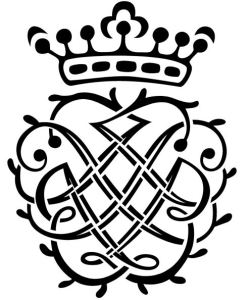William Byrd: Walsingham
Jean-Luc Ho, organ et clavecin
Encelade ECL 1401. 70’14
The Maiden’s Song, Sir William Petre Pavan & Gaillard, In Nomine, Walsingham, Susanna Fair, The Queen’s Alman, Fantasia in A, Ut re mi fa sol la, Clarifica me, Pater 111, My Lady Nevell’s Ground, Fantasia in G, Pavan in A, Fantasia in D, Memento salutis auctor.
 Although generally grouped under the title of the ‘virginalists’, most of the keyboard repertoire of Byrd’s era can be performed authentically on different keyboard instruments, although there are a few pointers towards either the organ (church or domestic) or one of the stringed keyboard instruments (harpsichord, virginal, clavichord). So the combination of harpsichord and organ on this CD is entirely appropriate, although there are one or two occasions when I might question Jean-Luc Ho’s particular choice of instrument. Both instruments were recorded in the Abbey of Saint-Amant-de-Boixe, Charente, France.
Although generally grouped under the title of the ‘virginalists’, most of the keyboard repertoire of Byrd’s era can be performed authentically on different keyboard instruments, although there are a few pointers towards either the organ (church or domestic) or one of the stringed keyboard instruments (harpsichord, virginal, clavichord). So the combination of harpsichord and organ on this CD is entirely appropriate, although there are one or two occasions when I might question Jean-Luc Ho’s particular choice of instrument. Both instruments were recorded in the Abbey of Saint-Amant-de-Boixe, Charente, France.
The Saint-Amant-de-Boixe organ is an interesting one, and new to me, a 2012 copy of the 1511/55 organ in Sint-Laurenskerk, Alkmaar, rather curiously ‘enhanced’ by the addition of two stops copied from a 1710 Andreas Silbermann organ in Marmoutier – a completely different genre. Although the style of the organ pre-dates Byrd by many years, the sound is unlikely to be dissimilar to the English Elizabethan organs that Byrd would have known and, with a couple of exceptions, the registrations are well-chosen. The harpsichord is by Ryo Yoshida (2010), after Trasuntino (1531), also much earlier than Byrd, but no matter. Both organ and harpsichord are at the same pitch and the same (meantone) temperament, making the switch between instruments easy on the ear.
Jean-Luc Ho’s playing is compelling and committed. His ornaments are stylistically appropriate and blend well into the flow of the music. He successfully seeks out the various mood of the wide variety of pieces, and plays with a nicely relaxed sense of pulse and momentum. And, of course, Byrd’s keyboard music if one of the highlights of the whole repertoire. However I don’t quite see the point of including an arrangement of Byrd’s vocal motet Memento salutis auctor – attractive as it might be, it has no connection with Byrd’s extensive keyboard repertoire.
